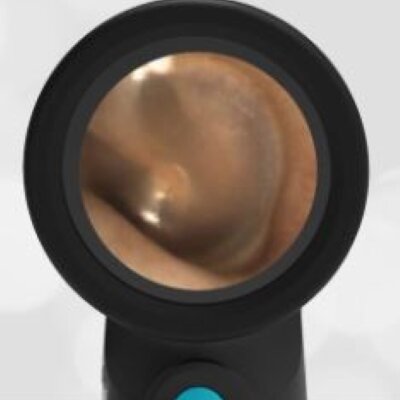What causes your ears to “pop” when an airplane descends?
Your ears “pop” when pressure on both sides of the eardrum is suddenly equalized.
The eardrum (tympanic membrane) translates sound waves into motion which is communicated by a chain of bones to the inner ear.

Middle ear bones – Malleus, Incus, Stapes
For the eardrum to move properly, the pressure on both sides of the eardrum must be the same. The eardrum has two sides. The outer side of the eardrum is exposed to the ear canal and to the “outside.” This is where sound waves enter and where you put the Q-Tips that you shouldn’t. The other side of the eardrum, the middle ear, communicates via the Eustachian tube to the nasal cavity.

Eustachian tube is the venting channel for middle ear
The Eustachian tube is what keeps the pressure equal on both sides of the eardrum. Although it is called a tube, only part of the Eustachian tube has cartilage. The rest is like a floppy hollow noodle that might stay “closed” because of “stickiness” between the sides of the tube. When the tube is closed, it can not equalize the pressure in the middle ear. This causes the familiar mild ear discomfort during an airplane descent. You may have noticed that this discomfort can be much worse when you have a cold. This is because the inflammation from the viral infection makes the Eustachian tube more likely to be closed.
A commercial airplane flying at 36,000 feet has a cabin pressure of about 6,000 feet. When you descend, the cabin pressure in the aircraft is gradually lowered from 6,000 feet to the altitude of the runway, perhaps 1,000 feet. During this time, your outer ear directly experiences this change in pressure. However, the middle ear can only equalize if the Eustachian tube “communicates” the new pressure via the nasal cavity. You can help this pressure to equalize by moderately forceful attempted exhalation against a closed airway – pinching your nose and holding your mouth shut. When you “pop” your ears, you are actually forcing the Eustachian tube to open (the floppy noodle to expand) to equalize the pressure. In medical terms, popping your ears is called a “Valsalva Maneuver.”

How to perform a Valsalva Maneuver
The video below shows a Valsalva Maneuver being performed several times by a healthy individual. You can clearly see the movement of the eardrum when the Valsalva is performed. The movement of the eardrum is due to pressure being increased in the middle ear space via the Eustachian tube.
Valsalva Maneuver
The Valsalva Maneuver might be considered to be the opposite of pneumatic otoscopy. In pneumatic otoscopy, a blast of air is directed at the outer ear to see if there is movement. Movement of the tympanic membrane during pneumatic otoscopy indicates a properly functioning system and likely no infection or perforation. In a cooperative patient, the Valsalva maneuver can be used as a proxy for pneumatic otoscopy.

